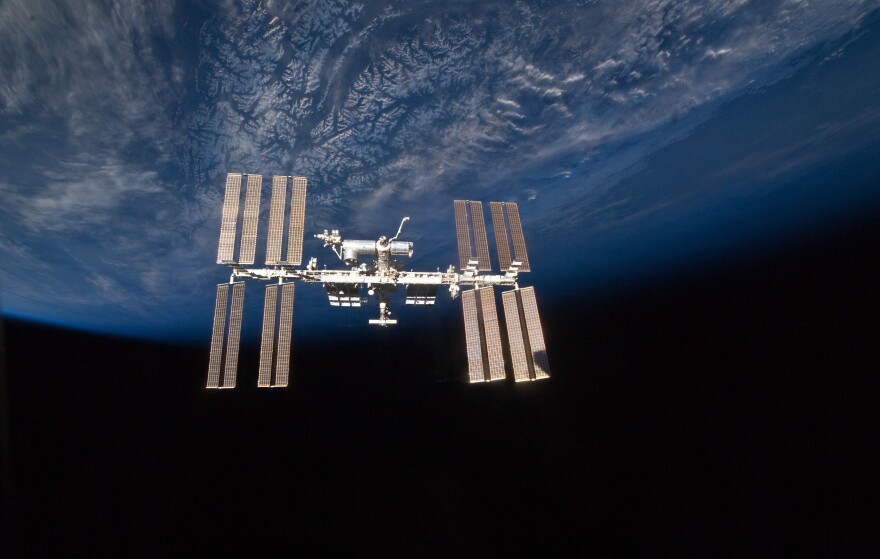Researchers at the University of Pittsburgh are working on technology that could help make a human mission to Mars possible.
One of the challenges scientists must overcome is the bone loss resulting from time spent in microgravity environments, said Michael Roberts, deputy chief scientist at the Center for the Advancement of Science in Space or CASIS.
“Bones are constantly being torn down and rebuilt. There’s a balance between resorption of bone and creation of new bone,” Roberts said. “In that space environment, since you’re not using your bones and they’re not mechanically loaded the same way they are here on Earth, your body adapts that and says ‘Why do I need to continue expend this energy on building a large bone? I don’t really need it up here because I’m floating around.’”
Astronauts take drugs to help prevent bone loss; the same kind of drugs that some people take for osteoporosis. But developing new and more effective drugs for preventing bone loss can still be a challenge, because neither the traditional two-dimensional cell cultures used in labs nor animal subjects such as mice and rats behave quite like the human body.
“Around 50 percent of the time, the outcomes of those two models do not correlate with what happens in the clinic, so something is clearly wrong with the cell mono-layers and some of the animal models,” said Peter Alexander, senior scientist at Center for Cellular and Molecular Engineering at Pitt. “This is why we’re trying to develop systems that use human … stem cells, so human from the beginning in a more sophisticated way.”
Alexander and his colleagues, Rocky Tuan and Riccardo Gottardi, have spent the last four years creating a bioreactor that more accurately mimics functional bone tissue.
“We’re supplying both cells that build bone and cells that break down bone, and we’re supplying them a 3-D environment or scaffold that closely models the bony tissue in the body,” Alexander said.
The bioreactor is part of a new wave of experimental technology called organs-on-chips or tissues-on-chips. The idea is to build tiny versions of human systems that could one day replace traditional dish cultures and animal testing.
Roberts said that could mean in the future, scientists might be able to tailor drug treatments to a specific person using their own cells, which could boost the positive effects of drugs and lessen negative side effects.

“By understanding how to form tissues in these types of devices, one day we may be able to grow whole organs that may be used for organ replacement,” he said.
Alexander and his colleagues won a research grant from CASIS to have the bioreactor sent to the International Space Station. By sending the system to a microgravity environment, researchers will be able to observe bone density loss and the effects of drugs meant to prevent it at an accelerated pace.
“We may be able to benefit astronauts by learning more about how anti-bone loss drugs work for them, but that same technology could be used on earth to help patients with osteoporosis,” he said.
Alexander said the accelerated pace of bone loss will also help the researchers prove to pharmaceutical companies that their technology works for testing osteoporosis drugs.
Roberts said it will be late 2017 or early 2018 before the Pitt bioreactor makes its way to the ISS, giving the researchers plenty of time to engineer it to function property in a microgravity environment. Alexander said he expects it to be there for about one month.




